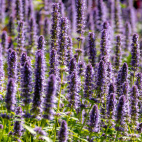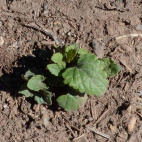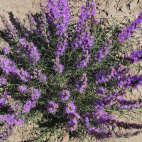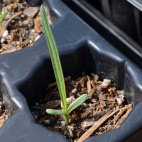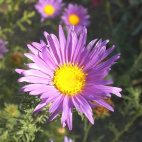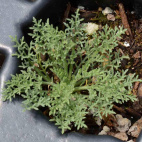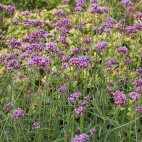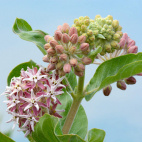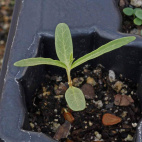Color
Availability
USDA Zone
Region
Type
Duration
Season
Germination
Soil
Sunlight
Height
Use
Narrow Your Search
Color
Availability
USDA Zone
Region
Type
Duration
Season
Germination
Soil
Sunlight
Height
Use
Wildflower Seeds - Dry West Region
The Dry West Region is one of the larger areas, but also has the fewest inhabitants. This area encompasses all of the areas in the American West that receive very little rainfall. The natural vegetation varies from true desert in the south, to sagebrush drylands in the north as well as in the higher elevations. The native species that grow in these areas are by nature very drought resistant, and able to handle the harsh conditions that are found there. The annuals that are displayed on this page need a steady source of water, so will need regular watering if they are grown. If you want to just see Western wildflower seeds for sale that will grow well without a lot of supplemental water, then filter the results by selecting "Native Wildflowers" and "Dry Soil" in the left column.
-
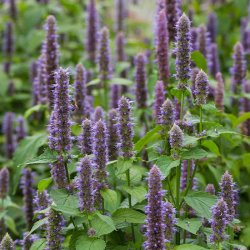 Anise Hyssop Seeds
Agastache foeniculum
A member of the mint family, this wildflower brings a delightfully rich scent to any herb garden. The tall, lavender flower spikes attract multitudes of hummingbirds, bees, and butterflies. It is a favorite with beekeepers, and we have found that the anise honey from this plant is excellent!Quick Viewx
Anise Hyssop Seeds
Agastache foeniculum
A member of the mint family, this wildflower brings a delightfully rich scent to any herb garden. The tall, lavender flower spikes attract multitudes of hummingbirds, bees, and butterflies. It is a favorite with beekeepers, and we have found that the anise honey from this plant is excellent!Quick ViewxAnise Hyssop Seeds
Agastache foeniculum
A member of the mint family, this wildflower brings a delightfully rich scent to any herb garden. The tall, lavender flower spikes attract multitudes of hummingbirds, bees, and butterflies. It is a favorite with beekeepers, and we have found that the anise honey from this plant is excellent!
$3.48 Pkt - $16.57 / Oz -
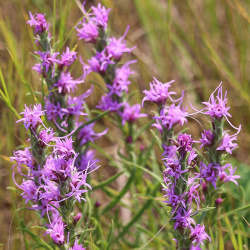 On Sale!
Dotted Blazing Star Seeds
Liatris punctata
A delightful mini version, this Blazing Star is perfect for fresh or dried arrangements. This striking native attracts many butterflies, bees, and hummingbirds. This perennial slowly grows a corm under the ground, which will grow out year after year.Quick View$3.75 Pkt - $26.00 / Oz
On Sale!
Dotted Blazing Star Seeds
Liatris punctata
A delightful mini version, this Blazing Star is perfect for fresh or dried arrangements. This striking native attracts many butterflies, bees, and hummingbirds. This perennial slowly grows a corm under the ground, which will grow out year after year.Quick View$3.75 Pkt - $26.00 / Oz -
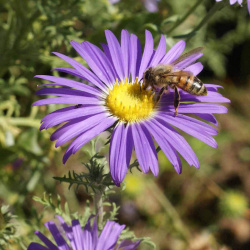 On Sale!
Prairie Aster Seeds
Aster tanacetifolia
Growing throughout most of the western United States, this aster especially thrives in desert areas. The ferny foliage produces bright blue and purple blooms.Quick View$3.48 Pkt - $15.95 / Oz
On Sale!
Prairie Aster Seeds
Aster tanacetifolia
Growing throughout most of the western United States, this aster especially thrives in desert areas. The ferny foliage produces bright blue and purple blooms.Quick View$3.48 Pkt - $15.95 / Oz -
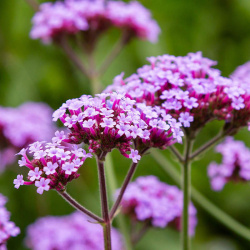 On Sale!
Purpletop Vervain Seeds
Verbena bonariensis
An excellent choice for a border plant, our Verbena Bonariensis for sale features clusters of deep lilac blossoms showcased on tall slender stems. This South American perennial is easy to grow and is very attractive to butterflies such as the Monarchs, Swallowtails, and Fritillaries.Quick Viewx
On Sale!
Purpletop Vervain Seeds
Verbena bonariensis
An excellent choice for a border plant, our Verbena Bonariensis for sale features clusters of deep lilac blossoms showcased on tall slender stems. This South American perennial is easy to grow and is very attractive to butterflies such as the Monarchs, Swallowtails, and Fritillaries.Quick ViewxPurpletop Vervain Seeds
Verbena bonariensis
An excellent choice for a border plant, our Verbena Bonariensis for sale features clusters of deep lilac blossoms showcased on tall slender stems. This South American perennial is easy to grow and is very attractive to butterflies such as the Monarchs, Swallowtails, and Fritillaries.
$3.48 Pkt - $15.95 / Oz -
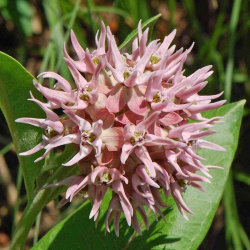 Showy Milkweed Seeds
Asclepias speciosa
A popular native wildflower in western North America, Showy Milkweed commonly occurs on rocky slopes, woodland areas, or streams. The sweet-scented pink blossoms draw many butterflies, so you will want this in your garden if you like butterflies!Quick View$3.48 Pkt - $17.72 / Oz
Showy Milkweed Seeds
Asclepias speciosa
A popular native wildflower in western North America, Showy Milkweed commonly occurs on rocky slopes, woodland areas, or streams. The sweet-scented pink blossoms draw many butterflies, so you will want this in your garden if you like butterflies!Quick View$3.48 Pkt - $17.72 / Oz
The Dry West Region is one of the larger areas, but also has the fewest inhabitants. This area encompasses all of the areas in the American West that receive very little rainfall. The natural vegetation varies from true desert in the south, to sagebrush drylands in the north as well as in the higher elevations. The native species that grow in these areas are by nature very drought resistant, and able to handle the harsh conditions that are found there. The annuals that are displayed on this page need a steady source of water, so will need regular watering if they are grown. If you want to just see Western wildflower seeds for sale that will grow well without a lot of supplemental water, then filter the results by selecting "Native Wildflowers" and "Dry Soil" in the left column.








